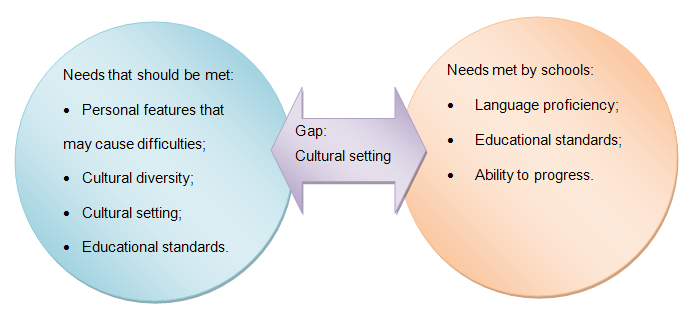The ESL student needs are integral parts of our curriculum because students are divided into different language proficiency levels in K-2 according to the expectations based on the study level. In this respect, students are assessed in terms of the listening/speaking, writing, and reading skills that are essential for further learning as an ESL student who wants to succeed in the curriculum activities.
As ESL student needs and expectations can be properly assessed, it is necessary to state the specific ESL student needs in terms of the learning progress and its relation to the language acquisition. Besides, determination of ESL student needs would contribute greatly to the curriculum development with regard to the specific needs of ESL students in US schools and other educational institutions. The most advanced level in our curriculum determines students as those ready to join the Transitional Bilingual Instructional Program (TBIP).
Schools assess ESL student needs in different ways including tests and readiness for oral presentations giving as well as comprehension level while reading, and others. As a rule, students have to take different tests in accordance with the curriculum established at schools to be considered eligible for certain study levels and grade levels. So, the educational institution I had reviewed sets tests for students and suggests them a specific curriculum to teach them with regard to their language progress whereas ESL students who achieve the highest level of learning become eligible for the Transitional Bilingual Instructional Program (TBIP) that presupposes that a student can be treated as a bilingual student and choose the same subjects as native speakers or other bilingual students. In other words, eligibility for the TBIP is the major way of assessing ESL student needs in terms of language acquisition.

The needs that should be determined and met include personal features of students and difficulties in learning that may be caused by them, cultural diversity, and cultural setting as well as educational standards. The needs met by school include language proficiency and students’ ability to make improvements and become eligible for the next study level. In this respect, the needs determined by school exclude the possibility of a student to come from different culture and have difficulties in language acquisition due to this peculiarity.
I believe that ESL student needs should be assessed in accordance with the assessment instrument suggested by Kathleen Graves in her book Designing language courses: A guide for teachers (2000) who introduced an entire cycle of implementing assessment instrument to the needs of students whose second language is English. In other words, the assessment has to be monitored on every stage as every change in organizations. So, deciding what data to collect is the first stage of the assessment process while it is also important to decide whom to survey and in what situations because a classroom can be not really appropriate for gathering information for assessment (Graves, 2000, p. 4 in 123.pdf).
The next stages that should take place include collecting of information and its interpretation in accordance with specific standards for second language learners; after that, it is necessary to make necessary interventions to improve the students’ progress and assess the results of interventions because other interventions might be necessary if the initial changes failed to make positive contributions (Graves, 2000, p. 4 in 123.pdf). The implementation of this instrument proves to be effective with international students as well as with family members and ordinary students.
Reference List
Graves, K. (2000). Designing language courses: A guide for teachers. Boston, MA: Heinle & Heinle.